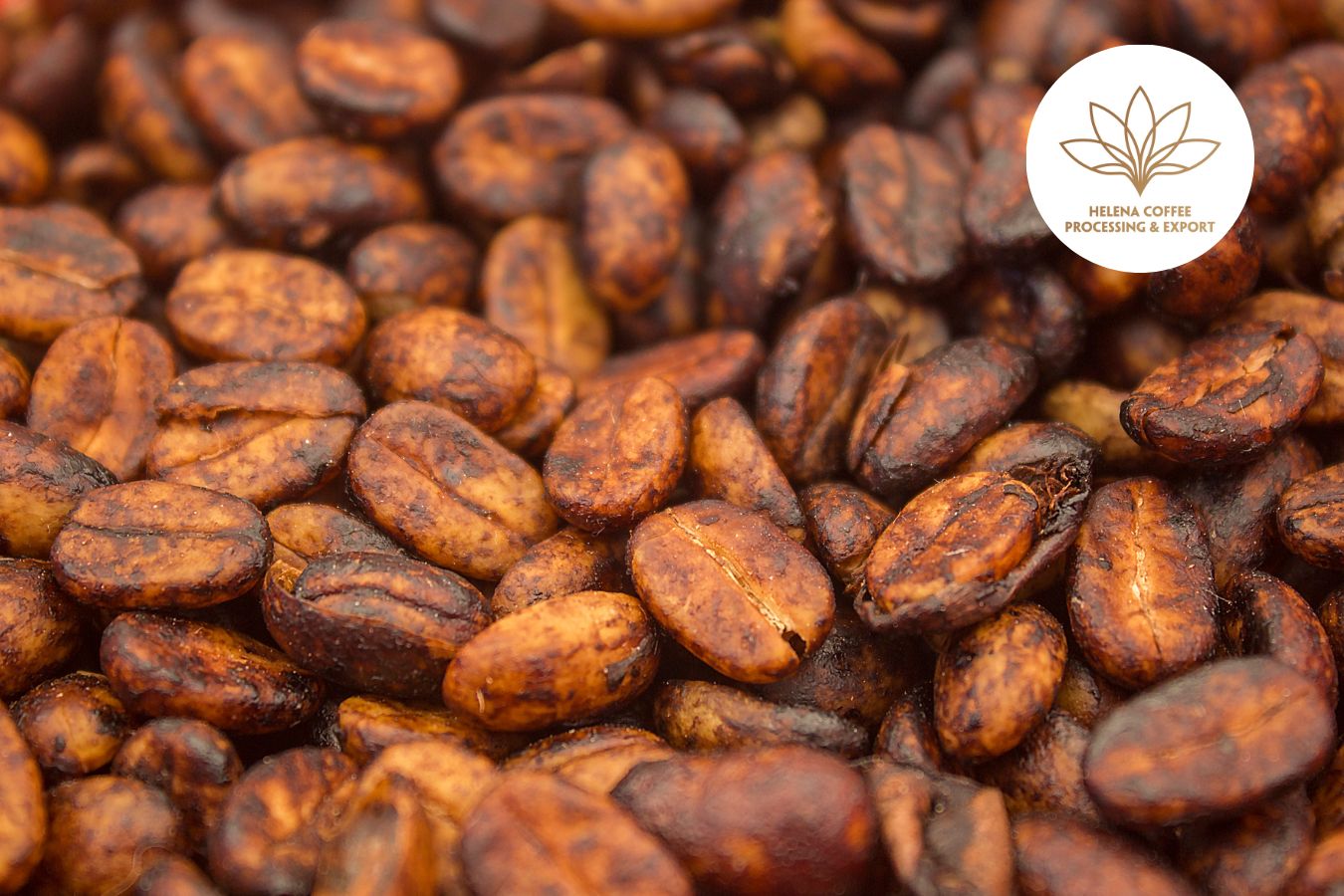
Today’s popular coffee processing methods
-
Honey processed coffee
-
Natural processed coffee
After being harvested, each coffee fruit will carry its mission, and its path to reach consumers. To fully exploit the flavor of each type of coffee, each growing condition, etc., original coffee is processed by different methods. Each coffee processing method is a specialized production process to create the traditional flavor of each type of coffee.
The principle in coffee processing is to separate the skin from the ripe fruit and reduce the moisture content of the coffee beans to 10-12%. It sounds simple, but the process is very complicated. Currently, three main coffee processing methods are being used:
Dry processing (pulped natural process)
Dry processing method (natural processed coffee)
- Step 1: Harvest coffee, remove leaves, garbage, foreign objects such as soil, stones, etc.
- Step 2: Let it dry in natural sunlight for about 25-30 days until the moisture content of the coffee cherries is 12-13%. In addition, a dryer can also be used to dry the coffee berries.
- Step 3: Grind the dried coffee berries by machine to remove the skin and get the core.
- Step 4: Remove impurities classify coffee beans.
- Step 5: Carry out roasting and packaging for preservation.
This is a method where, right after harvesting, people will dry the whole coffee beans under the sun and wind. This method has the advantage that it is easy to do and does not take much effort.
However, it has a massive disadvantage in that it makes coffee beans take longer to dry and is prone to mold from the inside. Especially when facing adverse weather not being able to dry it, it is easy to have a mold phenomenon that leads to low-quality coffee.

Because of the above disadvantages, people rarely process this method, especially for high-class coffee like Arabica.
However, if dry processing is done correctly: a high percentage of ripe fruit, such as drying on a rig, at the right time and temperature, and avoiding mold, the coffee can taste better than other processing methods.
Wet processing coffee beans
This pre-processing method is used to ensure the best quality for high-quality coffees. The making process will take more effort, but in return, the value of the finished coffee will be much higher.
Immediately after being harvested ( the number of green beans must be limited to the maximum), people will bring the coffee cherries to grind.
Then put it through the water to treat, filter out the dense outer layer, and get the rest of the filling to incubate for fermentation. Fermentation is only completed when the husk becomes rough and clear of viscous.

Finally, the coffee beans will be washed and dried, then removed the outer husk to produce the finished beans.
The drying process is also very elaborate, do not dry it directly on the ground because it will absorb moisture. When drying, it is necessary to spread evenly to dry all seeds. The drying process ends when the roots are not broken. This requires a lot of experience from the farmer.
Coffee prepared with the wet method will taste clean, balanced and light texture.
Honey processing
This cooking method is also quite similar to wet processing. However, people will not remove or retain all dense matter before drying. This will give the coffee bean a dark brown color similar to honey, true to the name of the honey processing method.
Coffees processed will retain a bit of sweetness and increase the flavor when enjoyed. Honey processed coffee requires care and meticulousness, takes a lot of labor, and is only suitable in places where clean coffee is cultivated.
The environment for drying coffee beans, also with drying tools, is clean and well shielded to avoid dirt, insects, and bacteria from entering during the drying process.

The Honey processing method gives a rich taste, sweetness, smooth texture, tartness and ripe fruit. Processing honey coffee brings many benefits. The peeling of fresh fruit does not have to use water, so it saves a lot of costs, water and electricity bills, compared to conventional wet or dry grinding.
Besides, the economic value is 2-3 times higher than regular coffee. Users can enjoy an extraordinary honey coffee taste, the sweetness of ripe coffee fruits and the rich aroma.
Natural processing
Natural processed coffees
Natural processing methods (natural), also known as dry processing, are the oldest p flavor coffee processing methods. After harvest, the whole ripe coffee cherries are first cleaned and then placed on a drying rack or in thin layers on the porch in the sun.
Although it requires less investment and seems more uncomplicated, it still requires certain climatic conditions to ensure that the beans are dried to a basic standard.

After the coffee is washed picked up to remove impurities (soil, stones, sticks, branches) and poor quality seeds (green, flat, rotten), the fresh coffee berries are 100% ripe. Will prepare to enter the fermentation stage. Coffee berries are spread thinly in the sun. The drying operation is the essential stage of the process, as it affects the final quality of the green coffee beans.
Coffee beans that are too dry will become brittle and produce too many broken beans during the peeling process (Broken coffee beans are considered faulty coffee beans). On the contrary, coffee beans that are too moist will be easily damaged quickly due to the attack of fungi and bacteria. Coffee beans are dried in the sun to 12-13% moisture and take 25 to 30 days.
Natural coffee is capable of creating the best coffees. If consistency can be achieved, naturally processed coffee can offer some interesting, more pronounced flavor notes and characteristics typical such as tropical fruit, mint, herbal flavor groups. …
